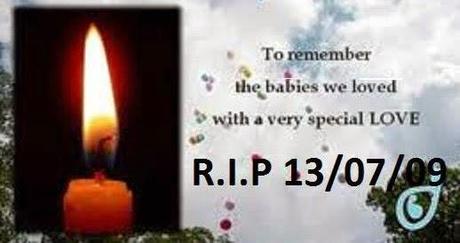
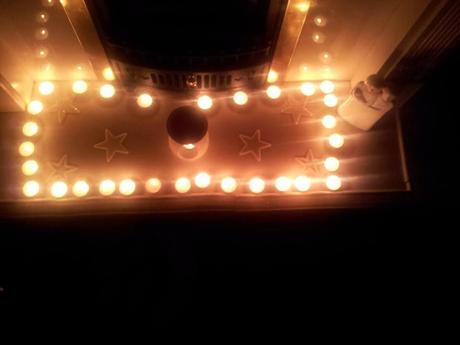
I was not right for a few weeks, but something inside gave me the strength to say "NO" I will not let this get the better of me, I don't know if it was my tablets kicking in or the will power of I will try again.We did and found of out around October 2009 I was pregnant, we were very happy but a little curious.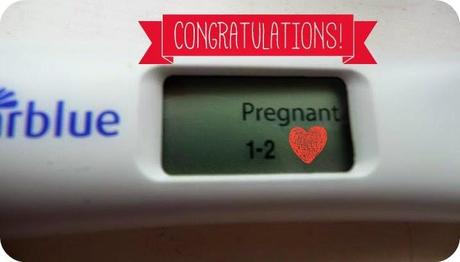

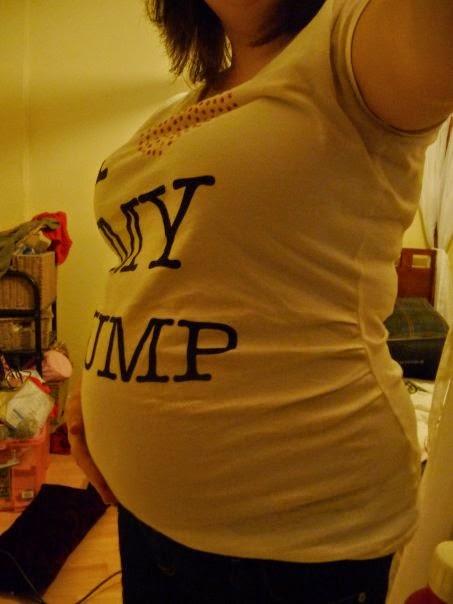 It was not having a very good pregnancy as I just kept getting water infection after water infection I must of had round 7 of them and the water infection would become my nemesis soon.
It was not having a very good pregnancy as I just kept getting water infection after water infection I must of had round 7 of them and the water infection would become my nemesis soon.February 6, 2010
Jonny aka (daddy) felt bump kick me 2day at 24 weeks.Finished work for my maternity leave round 12 of march 2010 I was soon to find out why this was a good idea. around the 23rd of march 2010 I was not feeling right was only coming up to 30 weeks, jonny and I sat down to watch a film that night, It was like a wave of pain I have never felt before (was contractions not to be known at this time -So Jonny rang the ward at first was saying ohhh its your water infection I did tell them no, it's a very bad pain , we did eventually get into the ward round some time at 10pm as was a little blood I had passed.
ended been put on monitors only, but they all kept saying again to me its just your water infection I said its not that is something else wrong. I was allowed some pethidine for the pain jonny did have to go home as the ward does not allow men to stay .I did nod off a little, but the pain was still in the background I ended up pacing the room so many times . I was told in the morning when jonny found me still in pain that the nurses said "ohhh she has been fine and fast asleep " . What I joke I had been in pain the whole time and walking the floors of the word.It was that bad I was rolling in around in pain screaming for someone to help me no one came even jonny asked and ohh be with you soon it took 4 hours for someone to see me and examine me was two new young doctors they just said to me you're fine .Later, when sat on the bed, I felt a gush it was my waters breaking.Well then they came over as my partner (jonny) said waters just gone, they examined me again and was 2cm dilated I was shocked and so scared as I knew something was not right but no one would listen to me well now they did but was too late.If they had gone all this properly and checked me I do believe I would have not been in this situation I never got the injections to help my baby's lungs as they had left it too late, but that point I was not even thinking straight it was only after I was so shocked.No time for an epidural my baby was coming at 30weeks 10weeks early then should of.
Millie was born at Pontefract Hospital on the 25th of March 2010 at 11.55am. She weighed 3 lbs & 12oz.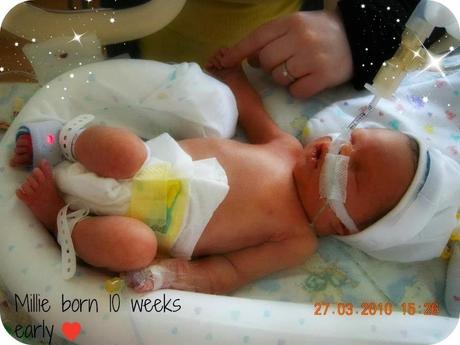
Millie was taken straight away to SCBU while me and my partner were in shock, I was absolutely terrified I did not know what was going on, everyone swooped into the room and took her away for medical attention, I had a shower to clean myself up was shaking all over the place I just wanted to see my daughter but was not allowed till they had got her in the incubator and all hooked up.
Looking at my precious little daughter all hooked up just shows how vunerable Millie was and close to death. Millie ended up on CPAP machine; A CPAP machine (the capitals stand for continuous positive airway pressure) is another piece of equipment that can help Millie breathe. A CPAP machine gently inflates Millie's lungs and helps to keep them open. Air goes in through a mask or via a tube in a baby's nose called a nasal cannula.Millie also was jaundice Millie’s skin turned yellow because of a substance called bilirubin builds up faster than their bodies can break it down.so that put her under Phototherapy lights, it helps Millie's body to convert the bilirubin to a harmless substance until her body can do this by itself. The lights also convert the bilirubin to a form that is more easily excreted. Millie was placed under the lights and wears a mask to protect her eyes.
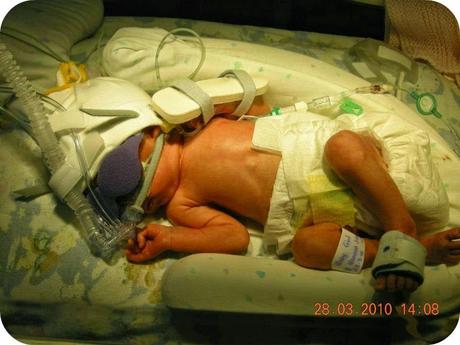
Also a NG tube which is placed through the nose, past the throat, and down into the stomach, used for feeding and administering drugs and other oral agents like Domperidone -medicine which is used in a number of conditions – Millie had hers for treatment of reflux / vomiting .

Millie also was on Domperidone 300mcgs x4 per week also having Folic Acid 1mg x1 per week, Dalivit 0.6ml daily and Sytron 1ml daily also.Abit of info what they are all for . DaliVit Multivitamin Drops contain the 7 vitamins essential for healthy growth in babies and toddlers.Sytron (Iron) Babies who are born before 34 weeks gestation or who weigh less than 1800g at birth are prone to iron deficiency . Dense to provide the required nutrition in small volumes.Nutriprem 2 is nutritionally tailored to meet the needs of preterm and low birth weight babies to help support catch-up growth, once they’ve been discharged from hospital. It is specially designed to help bridge the gap between a hospital preterm formula and a standard infant milk, and can be used up to 6 months corrected age. Cow & Gate Nutriprem 2 should be used under medical supervision .this one was given on discharge. This part is about two weeks later.
Millie was given a routine ultrasound head scan all preterm babies get this. It works by Sound waves are sent out from a small hand held instrument(called a transducer or probe), and reflected back to it after striking organs within the body. A black and white picture is produced by the sound waves on a TV monitor.What happens during a ultrasound scan . The radiologist or neonatologist who performs the scan will move the transducer gently over the ‘soft spot’ on the top of your baby’s head. This will not damage or hurt them in any way. Sound waves do not travel easily, so a small amount of special ultrasound gel is used between the transducer and the skin to ensure that good contact is maintained. If your baby is well enough, he will be taken down to the X-ray department to have the head scan, if not, it will be carried out on the neonatal unit.
Millie’s Scan- the radiologist came down to the SCBU , we could see him wheeling down the portable unit Jonny and I just had this terrifying feeling inside, so the radiologist started doing the scan on Millie's head it must of took around 30 mins, taking pictures of Millie's head when he had finished Jonny asked him “oh is everything ok “ he replied “ NO” and he just walked off. Jonny and I just looked at each other in shock . We were taken into a private room while the doctors have a look at all the information given to them. About 45 mins later one of the SCBU nurses came in and told you Millie had a bleed into head called Hydrocephalus. Hydrocephalus comes from the Greek hydro meaning water and cephalie, meaning brain. A watery fluid, known as cerebro-spinal fluid or CSF, is produced constantly inside each of the four spaces or ventricles inside the brain: between 400 and 600mls is produced each day. The CSF normally flows through narrow pathways from one ventricle to the next, then out over the outside of the brain and down the spinal cord. The CSF is absorbed into the bloodstream, and the amount and pressure are normally kept within a fairly narrow range.If the drainage of CSF is prevented at any point, the fluid accumulates in the ventricles inside the brain, causing them to swell and resulting in compression of the surrounding tissue. In babies and infants, the head will enlarge. In older children and adults, the head size cannot increase as the bones which form the skull are completely joined together. What causes hydrocephalus? The condition is caused by the inability of CSF to drain away into the bloodstream. There are many reasons why this can happen. Hydrocephalus can be congenital or acquired. Millie has acquired Hydrocephalus.
How is hydrocephalus treated? -Some forms of hydrocephalus require no specific treatment. Other forms are temporary and do not require treatment on a long-term basis. However, most forms do require treatment and this is usually surgical. Drugs have been used for many years, but they may have unpleasant side effects and are not often successful.The usual treatment is to insert a shunting device. It is important to note that this does not ‘cure’ the hydrocephalus and damage to the brain tissue remains. Shunting controls the pressure by draining excess CSF, so preventing the condition becoming worse. Symptoms caused by raised pressure usually improve but other problems of brain damage will remain.What is a shunt?
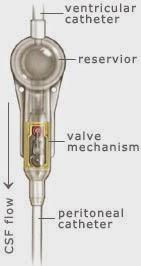
How are shunt problems treated?
Shunt blockages which are causing illness usually require an operation to replace or adjust the affected part of the shunt. Shunt infections are usually treated by removal of the whole shunt and a course of antibiotics before insertion of a new system. Modern approaches to antibiotic therapy mean that such treatment can be expected to succeed, in most cases.One of the GP Consultants was in the SCBU that day who deals with premature babies; he came over and explained in more depth about Millie’s hydrocephalus. He was so nice and kind, even drawing pictures and little diagrams to help us understand more. Explain to us, it’s a wait and see now with Millie's head, if it gets any bigger, sometimes at the start it can calm down, but if it does not we was told Millie would need brain surgery to be fitted with a shunt. This would not be done at SCBU but at Leeds general infirmary, we also found out Millie had a PDA.We dried our eyes and had some water, our mouths were so dry, but our body’s where sweating from the stress of it all. We put a brave face on and went back to see Millie in her incubator.
Day by dad Millie’s head was getting bigger; this seemed to go on forever and ever each day seeing her head getting big. Finally, after a few weeks we got the call that Embrace Transport Service was coming over to take Millie to Leeds hospital.About Embrace -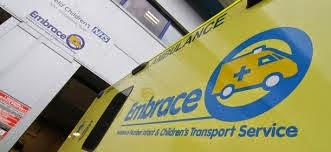
Provides a 24 hours a day, 7 days a week, critical care transport service for critically ill neonatal and pediatric patients in the Yorkshire and Humber region. We are located near junction 37 of the M1 from where they can respond quickly to referrals from clinicians throughout the region.http://www.yorkshireneonet.nhs.uk/transport-embraceWell the day came Millie’s was moving to LGI we were all packed and ready to go , the embrace team put her in well I only can describe it like a little incubator shuttle. Jonny and I followed in our car behind the embrace ambulance was so scary, I remember thinking at the time please be careful with her don’t crash. It ended up being a long slow drive to Leeds normal does not take long to get to but this day it did.Millie was wheeled in her little incubator to the peter congdon ward NICU where she was transfer back into her own incubator on the ward and made as comfortable as she could .bloods all taken again and all the normal routine exam done just to make sure all was as ok as it could be for the time.They kept testing the fluid in her head to see the pressure and if it was clear this carried on for about a week to two week drawing of fluid and it was not working, Millie’s head was still growing way too quickly, we was told by the neurosurgeons Millie would have her first surgery to put a access device in her head. this was also do draw fluid off they were hoping this one might settle her head down.Bit about the access device --In selected patients a ventricular access device (otherwise known as an “Ommaya reservoir”) is placed in the right frontal region for ICP monitoring or treatment of infections These cannot be flushed or assessed in any way by palpation, but provide the facility for potentially lifesaving percutaneous aspiration of CSF in the event of acutely raised ICP. This can be done by any clinician in this situation and simply involves the passing of a butterfly needle through the skin perpendicular to the surface of the skin at the apex of the dome of the reservoir, until a “pop” is felt. Elective sampling of reservoirs or shunts should preferably be carried out by a neurosurgeon. Millie was taken to surgery a few days later on the 22/04/10 never felt so sick in my life. Millie was taken over to the surgery unit we met the anaesthetist and saw the neurosurgeons, they let us in the little room to sign all the papers and to kiss Millie goodbye and good luck, I ended up in tears thinking I would never see my daughter again. Jonny and I went down to the Costa lounge, we were not Hungry it was mainly to keep us occupied and also with a few crappy magazines.Well about 2 and half hours went by doing bits and bobs making phone calls to our family keeping them updated. Went back up to the ward about 10mins later was told all is ok and Millie would be back on the ward soon.Millie arrived , her hair had been shaven on one side ,she was all hooked back up and being monitored around the clock. Millie did not look well she looked so fragile and still till this day can’t believe she got through it, well later on about 2 weeks later it was not good news Millie’s head was still growing at a rapid rate despite the access device being fitted, Millie also had a few scans and they showed it was still not good. So Millie was put in for a VP shunt been done on the 06/05/2010.The Big day came round again I could not believe we were going to go through more surgery, but we knew it was for Millie’s good and to save her life just she was so small a been through enough already .The porters came for Millie just like last time to take her to the theater room, it was like repeating the other time again, but this time we knew this was more serious and was not sure if she would make it this time round. With all the papers being signed again a few days before and consultants told us what was going to happen and been done regarding Millie’s VP shunt. We when to the surgical ward where we said our good buys for her and this time we did not know if we would see our baby daughter again. Jonny and I both kissed Millie and told her we loved her, Tears shed again by us both when parting from Millie’s side.
I find when I’m very stressed all I seem to do is eat so we went down to the Costa lounge once again , think we should of got shares in the company must have been that many times . Jonny just had a coffee and a muffin but I knew what would happen and it did bless him he was sick he seems to do the opposite to me.
We then got on and made our phone calls to our friends and family informing them on the situation as it stood at the time, I found myself feeling so down and low just not been able to pick myself up just wondering and wondering about Millie all the time. We kept going up to just check if she was back from surgery but no not at that time must have been about 4 hours past we god a phone call from the ward to say Millie had made it and to come up she would be with us again thank god in 15 to 20 mins . Jonny and I just hugged each other and thank god she made it.We waited in the parent lounge for about 15 mines and I saw the doors come open and Millie in her incubator, she looked so fragile and pale, but that the time has been just glad she had made it .A few weeks later Millie was sent back to Pontefract SCBU with the help of the Embrace Transport Service team so they could look after Millie again there.Millie was in SCBU for a while longer lots of ups and downs with her she was still not taking from a bottle and been tube fed, we spent our last night with Millie in the parents flats which was next to the ward, jonny and I looked after Millie that night but the nurses were always about if we needed them. Millie was sent home finally in June of 2010, tube feed and with lots of medication and also on special milk for later on. It was the best feeling in the world to be taking her home but also very scary.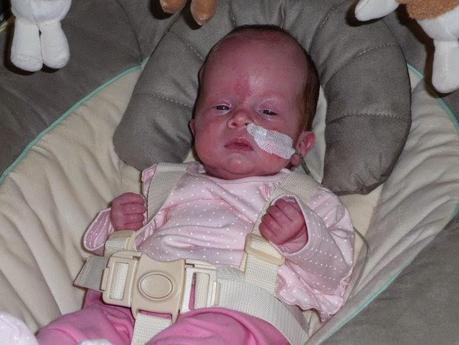
Piedro Childrens Orthopaedic Footwear
Provide a range of braces, splints and special footwear to correct deformity, aid movement, provide support and relieve discomfort.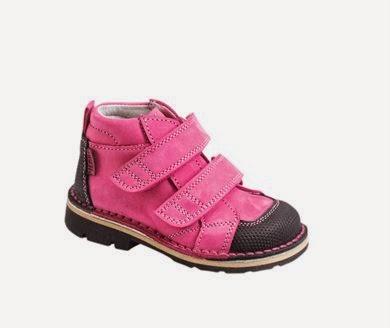
Millie walks on her tip toes most of the time these shoes help her as they are specially made for her feel & weighted .
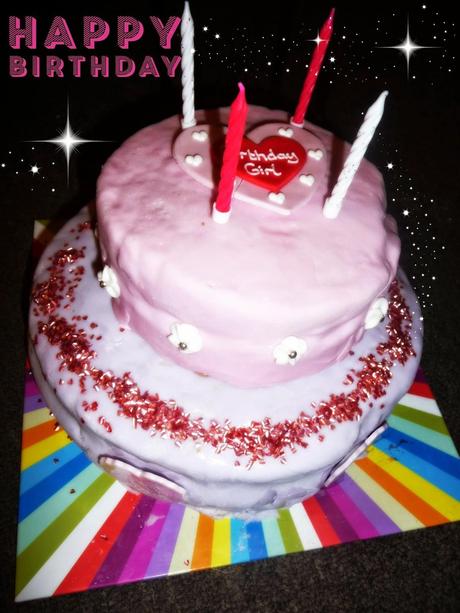
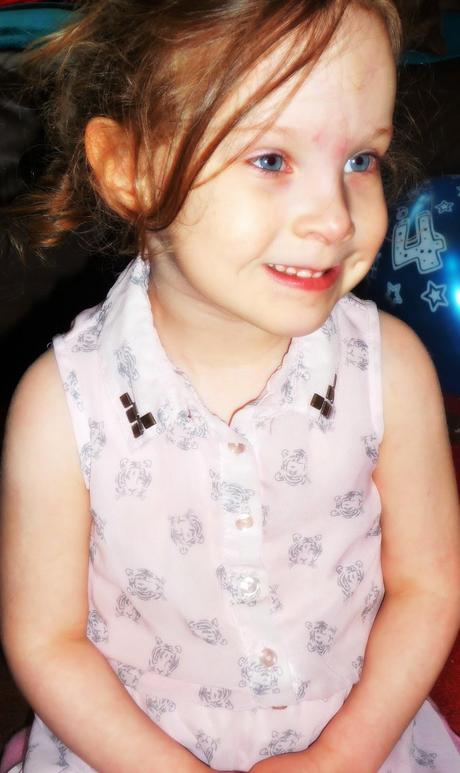
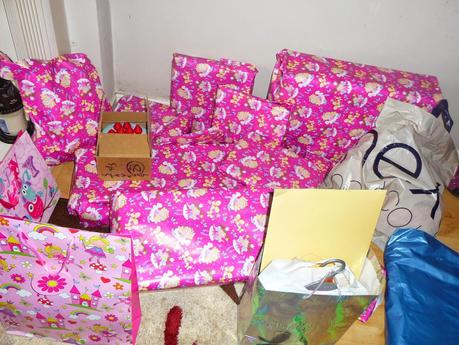
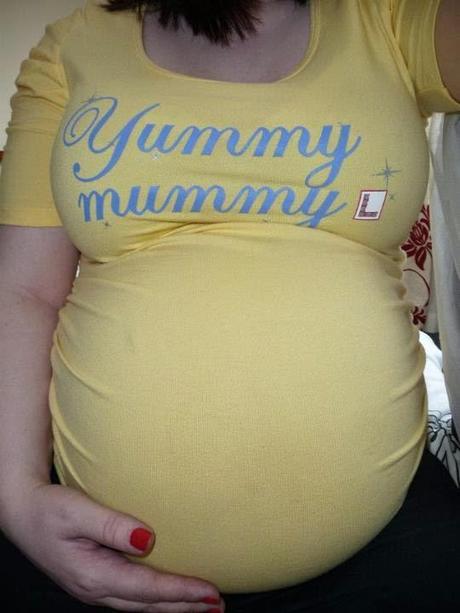
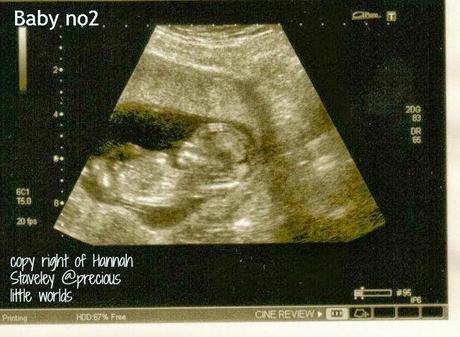
All went a bit better than my last pregnancy with Millie, but later on I was not feeling right, I called up the ward and said had previous premature birth and don't want to take any risks I had been in a few times before as just something not right but this time the pain again and having contractions.This was on the 23rd of April 32 weeks pregnant.
They gave me the new fetal fibronectin test -
The fetal fibronectin (fFN) test can't tell you for sure that you are in labour, but it can tell you that you're not. This is useful because in the early stages of preterm labour, it's very difficult to tell if a woman really is in labor based on her symptoms and a pelvic exam.A negative result on the fFN test means it's highly unlikely that you'll give birth in the next week or two, which can set your mind at ease and allow your practitioner to hold off on treatments that may not be needed. A positive result, on the other hand, is not as useful. It means you're at a higher risk of giving birth early, but it doesn't guarantee that you're about to give birth or that you'll deliver early at all, so it won't help your practitioner decide how to manage your situation.If you're having symptoms of preterm labour, your practitioner may also order an ultrasound to see whether your cervix is effacing (thinning out). During true labour, the cervix effaces and dilates (opens) so your baby can come out. If your cervix doesn't appear to be changing, it's another sign that you're not in labor.Mine came back positive I did have one done two weeks early and was negative, so just shows what can happen in two weeks.
I was taken straight down to the labor ward after this and put on Atosiban over the next few days, was put on monitors and watched around the clock so different to my other experience.
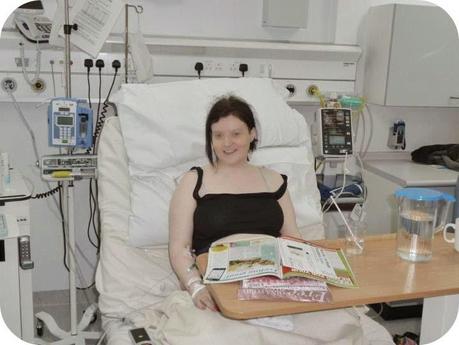
I was still having contractions I could feel and see them on the monitor it was all coming back again all I could think was how on earth could I cope but it did not sure if it was Adeline or he drugs.
was eventually allowed home on the 26th of April as the contractions had stopped for now they did say if you go into prem labor on this one they would not stop it. Did have a few problems after this having an emergency appointment as baby is engaged and is 3/5 lots of niggles/ contractions also finding out I was anemic.Lost my plug on 30th May - went to midwife the next day and was fully engaged.
Was admitted to hospital in labor on the 6th of June and had my baby boy
Alfie on the 7th June 2012 12.10 am 38+2 weight 7 lbs and 13 0z.
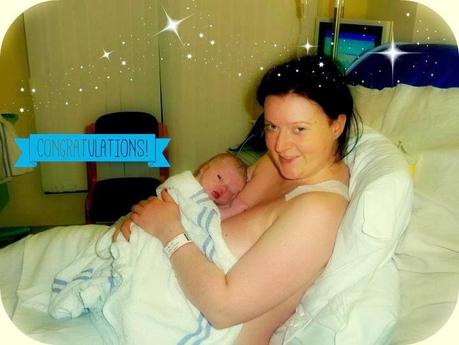
I am very lucky to say I have two amazing kids and a supportive partner and good friends and family around.
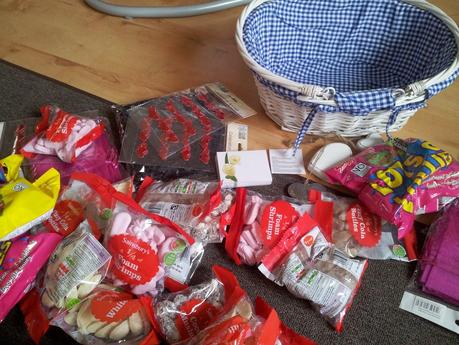
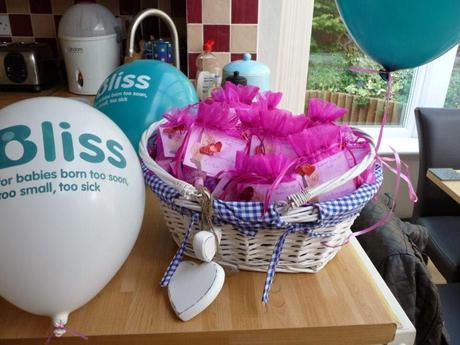
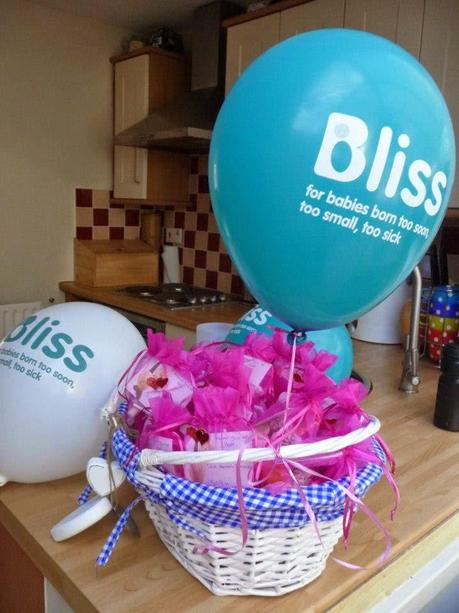
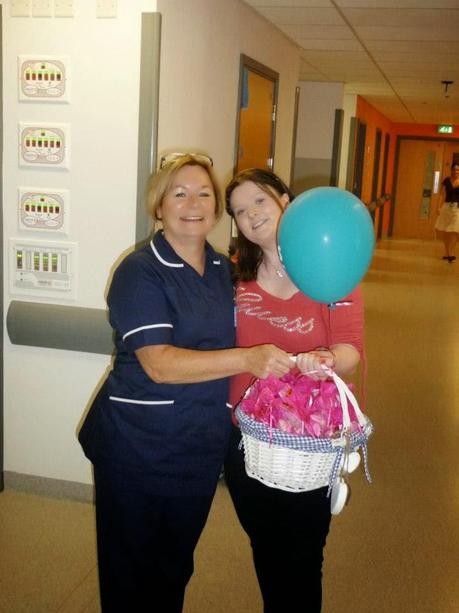

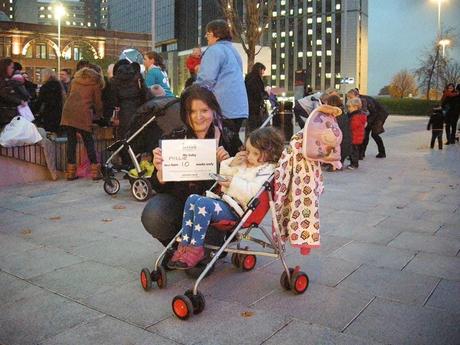

World Prematurity Day
World Prematurity Day is observed on 17 November each year to raise awareness of preterm birth and the concerns of preterm babies and their families worldwide.Approximately 15 million babies are born preterm each year, accounting for about one in 10 of all babies born worldwide.
Please feel free to share your stories or experiences
Many Thanks for taking time to read my blog post -
http://preciouslittleworlds.blogspot.co.uk
or http://preciouslittleworlds.blogspot.com
Tags - +Premature Birth +Premature Baby and Pregnancy News
